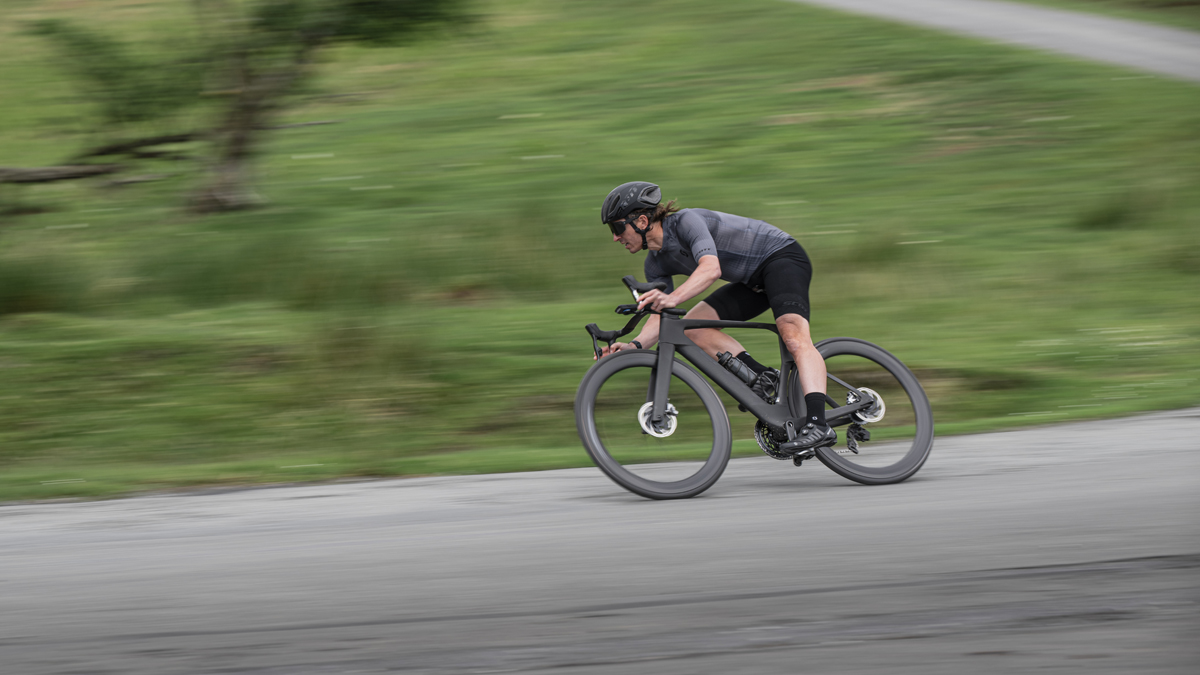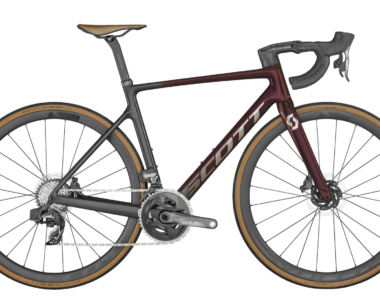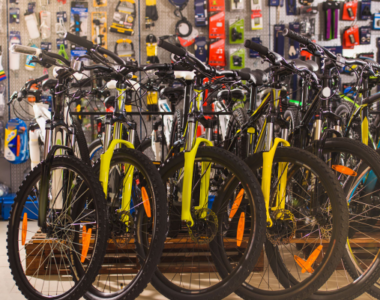No products in the cart.

Scott Foil RC Ultimate review: Despite this success, the Scott Foil has also been criticised for being overly stiff and uncomfortable on rough roads, leading some to question whether it truly meets the needs of riders who prioritize comfort and endurance over pure speed.
Now, with the release of the new 2022 Scott Foil, the company is aiming to strike a better balance between aerodynamic performance and ride quality. With a redesigned frame and fork, updated geometry, and the latest in component technology, the 2022 Scott Foil promises to be a more versatile and comfortable bike than its predecessors, while still maintaining its reputation as a true race machine.
SCOTT FOIL RC ULTIMATE: THE FRAME

The Scott Foil RC Ultimate features a full carbon frame and fork, with an HMX-SL carbon layup that’s designed to offer the best possible stiffness-to-weight ratio. The frame has a slightly updated geometry compared to its predecessor, with a longer wheelbase and shorter chainstays that provide increased stability and better power transfer.
One of the key features of the frame is its integration, with all cables and wires routed internally. The frame is compatible with both mechanical and electronic drivetrains, allowing riders to choose their preferred setup. The frame also features a proprietary seatpost design that’s designed to offer improved aerodynamics and compliance.
The Foil RC Ultimate also features a unique dropout design that’s been developed specifically for the bike. The design allows for easy wheel changes and adjustments, and features a replaceable hanger that can be swapped out in case of damage.
Overall, the Foil RC Ultimate’s frame is a testament to Scott’s commitment to innovation and quality. The frame is both lightweight and stiff, with excellent integration and features that are designed to improve performance and ease of use.

Based on my observation, the seatpost of the Scott Foil didn’t provide as much flex as the one on the Cervelo R5, which is highly impressive. However, it still offers a considerable amount of compliance and was more effective in reducing vibrations than other similar designs from other brands.
Additionally, it is worth noting that a rear light can be fitted into the D-shaped slot on the seatpost for increased visibility without compromising aerodynamics, although this feature comes at an extra cost of $44.99 / £39.99.

Scott claims that the weight reduction of the Foil is due to several factors, such as a better carbon lay-up, fewer carbon pieces and joints (30% less), and attention to details like seatstays and seat clamp. The frame’s weight is claimed to be 915g in a size 54cm, while the Specialized Tarmac SL7 in a size 56cm weighs 800g.
.
The Scott Foil, equipped with SRAM Red groupset and Zipp 454 NSW wheels, weighed 7.28kg in a size 54cm. In comparison, the Specialized Tarmac SL7 with Shimano Dura-Ace groupset and Roval Rapide CLX 51/60mm wheels weighed 6.6kg in a size 52cm, putting it just under the UCI weight limit. Although the Specialized had a smaller frame size and less deep wheels, the weight difference between the two bikes was still significant at almost 700 grams.

The aerodynamics of the Scott Foil have been significantly improved compared to its predecessor. Scott has opted for a deeper design throughout the frame, even having the seat tube hug the rear wheel, similar to what is more commonly seen on time trial bikes. The combination of all the modifications is said to result in the new model being one minute and 18 seconds faster over 40km at 40kph compared to the previous iteration.
THE BUILD

The Scott Foil we tested features mostly SRAM components, including a Red AXS groupset with an integrated power meter and the top-of-the-range Zipp 454 NSW wheels. The bike is fitted with Schwalbe Pro One tires in both 25mm and 28mm widths to balance aerodynamics and comfort.

This geometry, combined with the stiff and responsive frame, means that the Scott Foil RC Ultimate is a bike that is built for speed and aggressive riding. It feels incredibly planted and stable when cornering at high speeds, while still being nimble and responsive enough to tackle technical descents with ease.
The Scott Foil RC Ultimate is not an outlier when it comes to geometry, but it is not the most aggressive or zippy model out there. The 72.5-degree head angle, 412mm chainstays, and a 70mm BB drop position it towards the controlled and stable end of the spectrum. Models that are more aggressive tend to have head angles over 73 degrees, chainstays of 410mm or less, and a BB drop well into the 60s.
However, the Foil’s HMF carbon frame is a work of art in its own right. It has been designed to be as aerodynamic as possible, with wind tunnel testing being a significant part of the design process. The truncated aerofoil shape that makes up much of the tubing is a testament to this – it’s a design feature that’s been around on the Foil for years, and Scott have continued to refine it for the latest model.
The frame is also incredibly light, with our test bike coming in at just 7.28kg (size 54) including pedals. This is thanks in part to the use of high modulus carbon fibre, which keeps the weight down whilst maintaining stiffness and strength.
The Foil also features integrated cable routing, which keeps the lines clean and sleek, and helps to improve aerodynamics. This also means that maintenance is a little more involved, as the cables are routed through the frame rather than being easily accessible from the outside.
Overall, the frame of the Scott Foil RC Ultimate is a testament to the latest in aerodynamic design and lightweight carbon fibre technology. It’s a stunning piece of engineering that is sure to turn heads out on the road.
THE RIDE

Despite the challenging terrain, the Scott Foil RC Ultimate handled everything well. The bike felt responsive and smooth on the flats, with the aerodynamic design providing an extra boost of speed. On the climbs, the bike felt light and agile, making it easy to tackle the steep gradients. And on the rough roads, the bike’s improved compliance was immediately noticeable, with the frame absorbing the bumps and vibrations with ease.
The handling of the bike was also impressive, with the frame feeling stiff and stable in the corners, and the responsive handling making it easy to navigate tight turns and descents. The Shimano Dura-Ace Di2 groupset was flawless, providing quick and precise shifting, while the disc brakes provided reliable stopping power even on the steepest descents.

The Foil RC Ultimate proved a more than capable partner for all of it, with plenty of stiffness where it was needed for power transfer on the climbs, yet still retaining a degree of comfort that was appreciated when the going got rough.
On the flatter and faster roads, it was simply a joy to ride. It felt fast, stable and, dare I say it, fun. It’s a bike that inspires confidence on the descents, and it’s clear that Scott has put in the work to make it an aero bike that doesn’t feel twitchy or nervous when you’re pushing the limits.
The Foil RC Ultimate is also an incredibly responsive bike. It’s hard to put into words just how good it feels when you’re accelerating, but it’s one of those things that puts a big smile on your face. The power transfer is excellent, and the bike just feels like it wants to go fast.
Of course, it’s worth remembering that this is a bike designed with racing in mind. It’s not the most comfortable bike out there, and there are certainly more plush options if you’re looking for something to take on all-day rides. But for shorter, sharper efforts, it’s hard to imagine a better option.
The Foil’s geometry also felt well-suited to handling the rougher roads in my area. Although it’s not billed as a endurance bike, the Foil was surprisingly comfortable on those bumpy surfaces. The rear-end felt composed and didn’t bounce around, while the front absorbed the worst of the hits. The addition of the Syncros Creston iC SL one-piece bar/stem combo helped in this regard, offering a degree of compliance thanks to the built-in vibration-damping technology.
During the ride on the valley roads with coarse tarmac, the Scott Foil’s pressures were set at 60 and 55psi, as per SRAM’s pressure calculator. This allowed the bike to absorb high frequency vibrations, which may have contributed to the ease of maintaining speeds.
VALUE AND CONCLUSION
It’s true that the Scott Foil RC Ultimate is a high-end, premium bike and comes with a price tag to match. However, it’s worth noting that the bike is built up with some of the finest components on the market, such as the top-of-the-line Dura-Ace Di2 groupset, and the ultra-lightweight ENVE SES 5.6 wheelset.
Additionally, the Foil’s aerodynamic design and attention to detail make it a top-performing bike, making it an attractive option for serious racers or riders looking to get the most out of their performance.
Ultimately, the price point of the Foil RC Ultimate may not be within reach for every cyclist, but for those willing to invest in a high-end bike with top-of-the-line components and race-proven performance, it could be a worthwhile investment.
The Scott Foil is a pricey option even when compared to other World Tour bikes. While the top-tier Trek Madone costs $13,199.99 / £14,500.00, and the highest-priced Specialized Tarmac SL7 costs $14,500.00 / £13,950.00, the Scott Foil in this build costs $15,999.99 / £15,899.00.
REASONS TO BUY
- +Very fast
- +Comfortable
- +Confident handling
REASONS TO AVOID
- -Still a little on the heavy side
4BiKE Cycling Marketplace is an international e-commerce platform dedicated to the cycling industry. Founded in [year], the company operates online marketplaces in the United Kingdom (4bike.co.uk) and the United States (4bike.us), as well as a business-to-business platform (4bikebusiness.com) that caters to the global cycling community. 4BiKE focuses on providing vendors with comprehensive support and services, including subscription-based plans, high SEO standards, marketing support, and streamlined sales processes.



